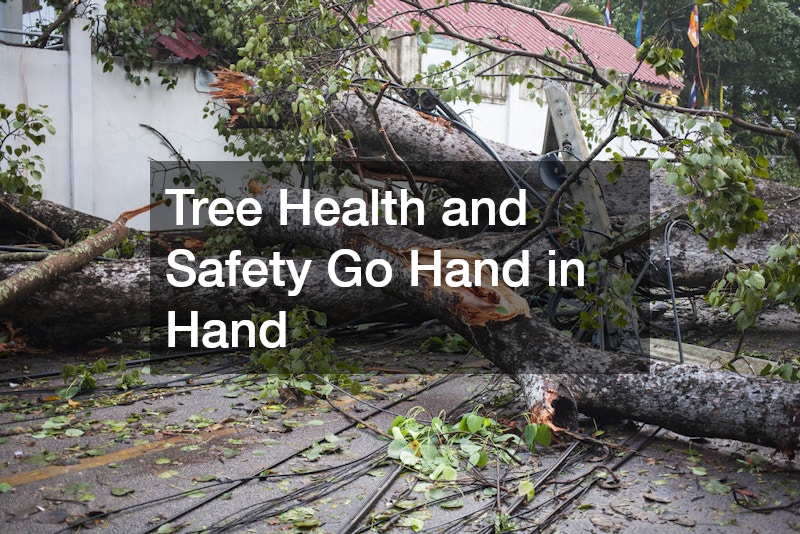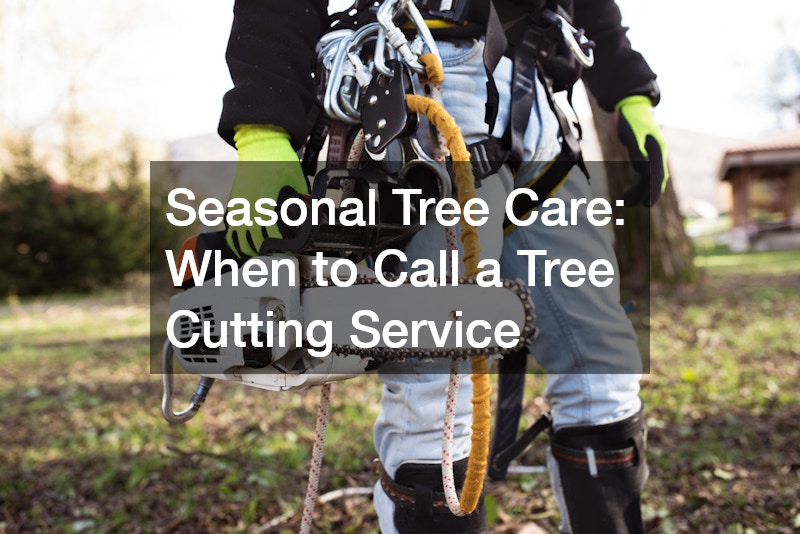Trees are a vital part of any landscape, offering shade, beauty, and a connection to nature. Yet, they require consistent care throughout the year to stay strong and safe. Each season brings unique challenges for tree maintenance, from spring growth spurts to winter weather damage. Without proper upkeep, even healthy trees can become hazards to your home and property. Regular inspections and maintenance by a tree cutting service not only keep your yard looking great but also protect your investment in your landscape.
Recognizing Seasonal Tree Growth Patterns
Each season impacts your trees in different ways, influencing how and when they grow. Spring often brings rapid growth and budding, while summer supports full canopies that may require shaping or thinning. Fall is a time for shedding leaves and preparing for dormancy, and winter can leave trees vulnerable to snow, ice, and wind damage. Understanding these natural cycles helps homeowners anticipate the needs of their trees and time maintenance accordingly. Partnering with a tree cutting service during these transitions can prevent overgrowth, disease, and damage caused by changing weather conditions.
Late winter and early spring are key periods for pruning, as this is when most trees are still dormant and easier to shape without stress. During summer, trimming may be needed to manage heavy branches or improve sunlight exposure. Fall offers an opportunity to remove weak limbs before storms arrive, while winter can be a time for assessing structural integrity. Knowing how trees respond to seasonal changes helps you plan care more effectively and maintain strong, healthy growth throughout the year.
Identifying When Trees Pose a Safety Risk
Tree health and safety go hand in hand, especially when your property is surrounded by mature trees. Over time, branches can grow too close to power lines, lean dangerously toward buildings, or develop internal decay. These issues often start small and go unnoticed until a storm or strong wind trimmer can ensure that safety risks are addressed before they escalate.
You should contact a professional if you notice cracked trunks, hanging limbs, or trees leaning more than usual. Mushrooms or fungi growing around the base may signal internal rot, and peeling bark can indicate structural weakness. After major weather events like heavy rain, ice, or wind, it’s wise to have your trees assessed for damage that might not be visible from the ground. Acting quickly when warning signs appear can prevent injuries and costly property repairs later on.
Understanding the Best Times for Tree Cutting
Timing is one of the most important aspects of proper tree care. The best time to cut or prune trees depends largely on the species and local climate. In general, pruning during a tree’s dormant season helps it recover faster and reduces the risk of disease. A professional treetrimmer understands these seasonal differences and can recommend the ideal schedule for your trees based on their type and condition. Proper timing promotes healthy regrowth, minimizes stress, and enhances the tree’s natural shape.
Early spring or late winter is often ideal for most trees, since new growth can begin immediately after pruning. However, certain species—such as maples or birches—may be better trimmed in late summer or early fall to avoid excessive sap flow. Dead or hazardous branches, on the other hand, should be removed as soon as possible, regardless of season. Consulting an expert ensures your trees are cut at the right time and in the safest, most beneficial way.
Preparing Your Yard Before Scheduling Service
Getting your property ready before professional tree work can make the process safer and more efficient. Clear the area of outdoor furniture, vehicles, and other items that might get in the way of falling branches or heavy equipment. It’s also helpful to make sure there’s easy access to the work area, whether that means unlocking gates, moving lawn decorations, or marking any underground utilities. By preparing your yard ahead of time, you help the tree trimmer complete the job smoothly and safely.
Communicate with the crew about your expectations before work begins. Identify which trees or limbs need attention and discuss cleanup options after cutting. If you have garden beds or delicate landscaping nearby, let the team know so they can take extra precautions. Some homeowners even choose to cover fragile plants or decorations with tarps to prevent debris damage. A bit of preparation can go a long way toward ensuring a clean, efficient, and professional result.
Maintaining Tree Health After Professional Cutting
After trees have been cut or pruned, proper follow-up care is essential to encourage healthy recovery. Even minor cuts create wounds that can attract pests or disease if not cared for correctly. Watering, mulching, and monitoring for signs of stress are all important parts of post-cutting maintenance. A professional tree cutting service may also recommend fertilizer or soil treatments to support new growth and strengthen root systems. Ongoing care helps your trees recover quickly and continue to grow strong in every season.
More specifically, you should keep an eye on the areas where branches were removed, especially during the first few weeks. Look for signs of splitting, insect activity, or discoloration. Applying mulch around the base helps retain moisture and regulate soil temperature, but be careful not to pile it against the trunk. With consistent attention and seasonal checkups, your trees will continue to enhance your property’s beauty and value long after professional cutting is complete.
Seasonal tree care is about more than just appearance—it’s about maintaining safety, health, and balance in your outdoor environment. By understanding how trees respond to each season, you can better plan your maintenance and avoid costly issues later. Regular inspections, proper timing, and professional expertise all contribute to a thriving, well-managed landscape.
When it’s time to address overgrowth, damaged limbs, or potential hazards, calling a tree cutting service ensures the job is done safely and effectively. With ongoing attention and seasonal upkeep, your trees can continue to flourish for years, providing shade, beauty, and peace of mind through every season.




